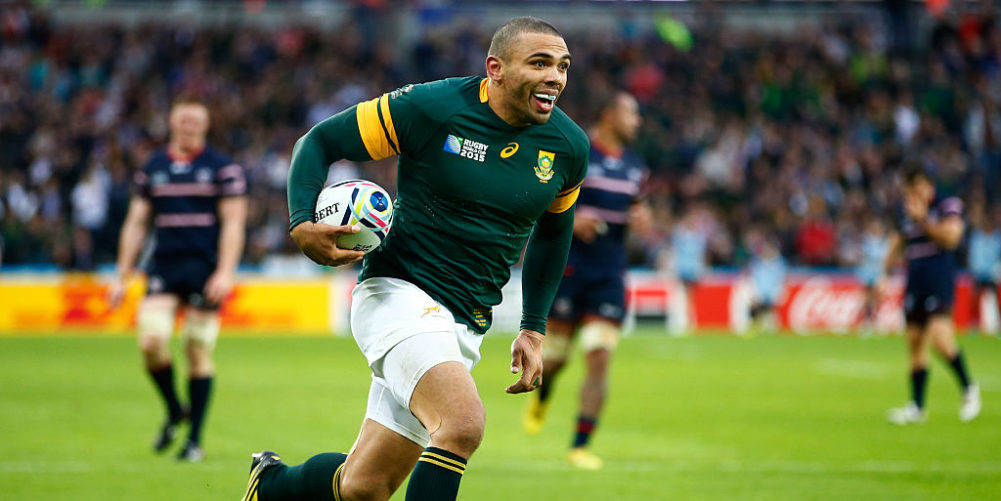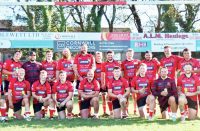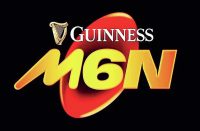The debate as to who was rugby‘s quickest ever player is perennial and one of those always mentioned is former Harlequins, England and Lions flyer John Young, who has recently passed away aged 82.
Young was just an 18-year-old schoolboy at Bishops Vesey’s GS when he won the AAA 100 yards title – the British Championships – in 9.9secs in 1956 on what amounted to a ploughed field at the White City which was always a graveyard for sprinters at the best of times, let alone after a week’s unrelenting rain.
The Pathe news reel of the Championships centred on Chris Chataway and Doug Ibbotson in the three miles and the youthful Young, declaring that at last Britain had a world class sprinter and suggesting that even at 18 a place on the GB team for the 1956 Olympics was nailed on.
Alas it didn’t quite work out like that. There was another outstanding win in an Invitation meeting the following week in 9.8 seconds but then came a nasty hamstring tear which needed resting and rehabbing. That tear troubled him for the rest of his sporting career. In the end he didn’t travel to Australia and in fact his athletics career was essentially over.
It’s difficult to judge how quick he might have become but all we can say is that the runner-up that sodden day at the White City, Titus Erinle from Nigeria – any relative of former Wasps centre Ayoola Erinle I wonder? – was a seasoned Olympian.
And in third place the highly-rated Roy Sandstrom took a Commonwealth Games gold medal with England in the 4×100 metre relay in Cardiff in 1958 and a silver medal with the GB sprint quartet at the European Championships that year.
Young was definitely rapid and his moody good looks also attracted media attention – after his AAA title he was immediately dubbed the Marlon Brando of the track. Brando had recently appeared in The Wild One and On the Waterfront and yes there was, in fairness, a noted resemblance between the two.
However although a gifted athlete, rugby was much more to Young’s liking temperamentally. Something of a bon viveur and party animal, the strict discipline required of the successful athlete was not greatly to his liking whereas his natural speed – honed by occasional sprint training and a few early nights – could see him reach the top much more easily in rugby.
In 1958 he joined Quins, made his England debut that same year and scored on his Lions debut against New Zealand in 1959 when he stepped in for the injured Peter Jackson, who normally shared Test duties with Tony O’Reilly.
Young was a frequent roommate of the boisterous Irishman and shared his love of life and together they could be a lethal combination especially when you added O’Reilly’s wingman Andy Mulligan into the mix.
Young continued to blaze a trail for Quins and was the first choice England wing for another couple of seasons but increasingly his hamstrings let him down while his business career started to take over.
A lawyer by training he quickly tired of that and switched to the City and stockbroking. He became a senior partner at Simon & Coates, director ofpolicy and planning at the London Stock Exchange and chief executive of the Securities and Investments Board and chairman of Lloyd’s Regulatory Board.
Rugby was relegated to his hobby although in retirement he served as an England selector and became heavily involved with his local Dorking club.
But now the big question. How would Young have fared in my specially constituted Rugby’s Olympics? I’m not sure you can actually answer that – different times, massivley different running tracks and spikes – but I will give you my contenders for what should be a belting final.
My one qualifying criteria is that all the contenders must be bone fide Test match rugby players so, alas, there is no place for athlete turned Sevens star Carlin Isles whose 10.19 secs for the 100m is clearly the quickest time ever posted by an individual who plays rugby at any kind of representative level.
Harsh I hear you say…but I am both the promoter, starter and race jury of this splendid TV spectacular. It will be run on a perfect June evening, with light following wind, at the Olympic Stadium in Rome which regularly hosts both athletics and rugby these days. Under starter orders…
Rugby Olympics: 100m
Lane 1: Paul Sampson (Wasps and England): Beat Dwain Chambers in an England Schools 100m final, PB of 10.48 seconds.
Lane 2: Ken Jones (Wales): Legendary Lions wing and Olympic silver medallist at 1948 Olympics in the 4 x100.
Lane 3: Eric Liddell (Scotland): The Scotland wing was Olympic 400m champion in 1924 and bronze medallist in the 200m.
Lane 4: Brian Habana (South Africa): Once outran a cheetah… in a TV ad! Really quick but humans can’t outrun cheetahs.
Lane 5: Takudzwa Ngwenya (USA): 10.7 PB in plimsolls on grass as a kid. ‘Did’ Habana in cold blood at RWC2007.
Lane 6: John Young (England): Former GB National 100 yards champion, ran 9.9 on a ploughed field to win the title aged 18.
Lane 7: Nigel Walker (Wales): Olympic semi-finalist in the 110m hurdles. 10.38secs PB for 100m. Arguably race favourite.
Lane 8: JJ Williams (Wales): Whippet like Wales and Lions wing with 10.7 (100m) and 21.2 (200m) personal bests.
*As a wildcard I am asking Boks scrum-half Cobus Reinach to stand by. I have no idea what his 100 PB is but over 50 metres I have never seen anybody quicker on a rugby pitch. Would win the indoor 60m title comfortably.
BRENDAN GALLAGHER























